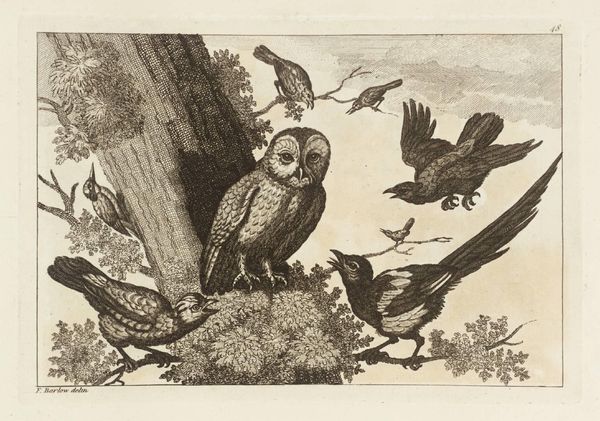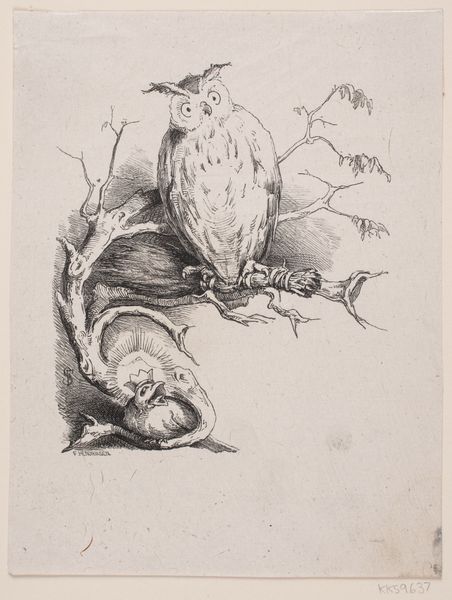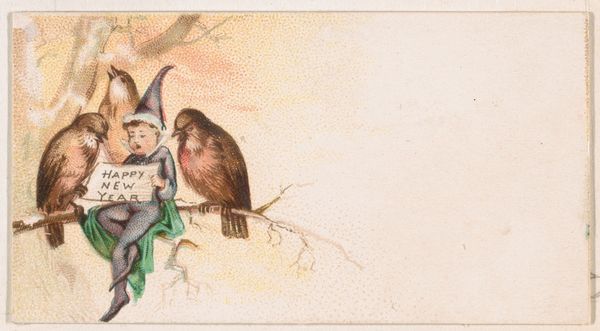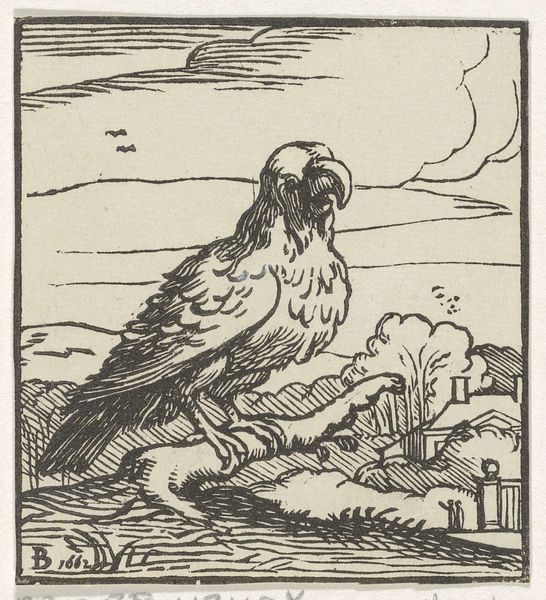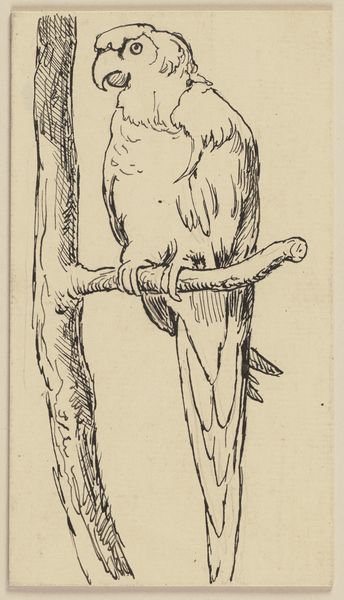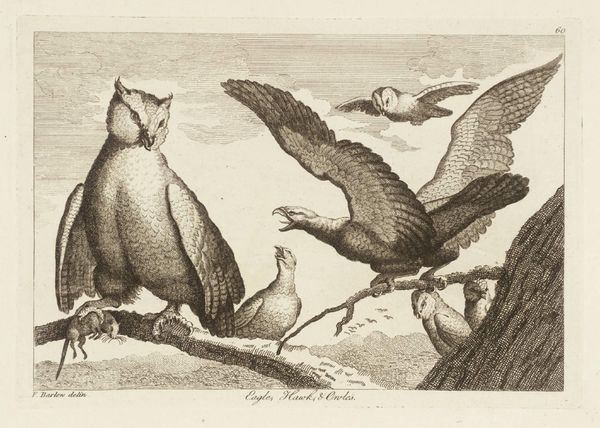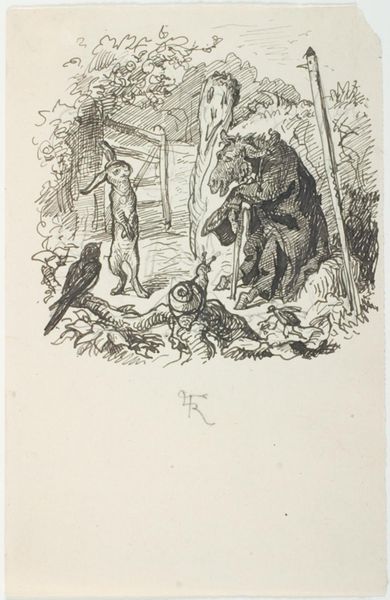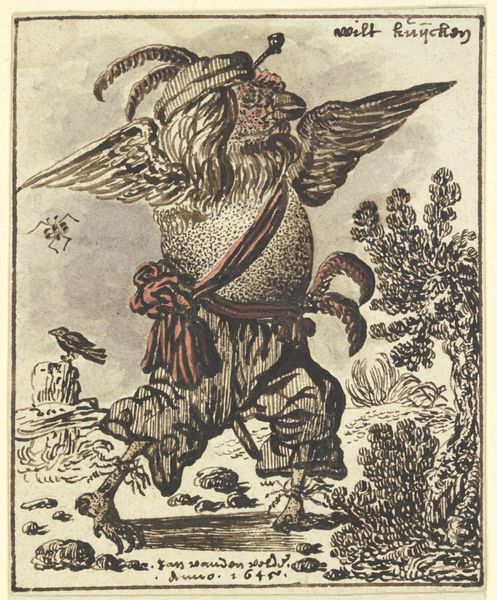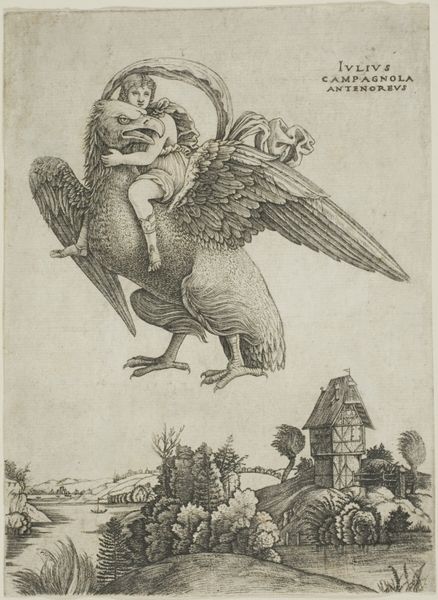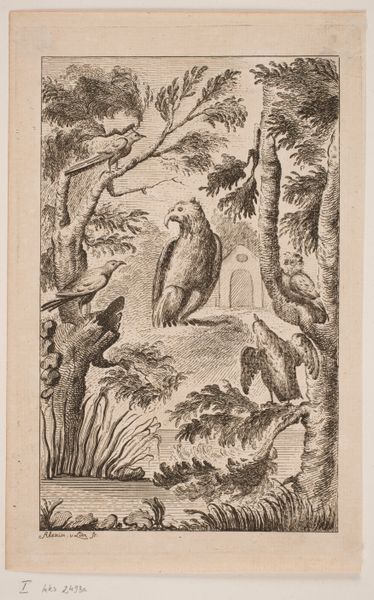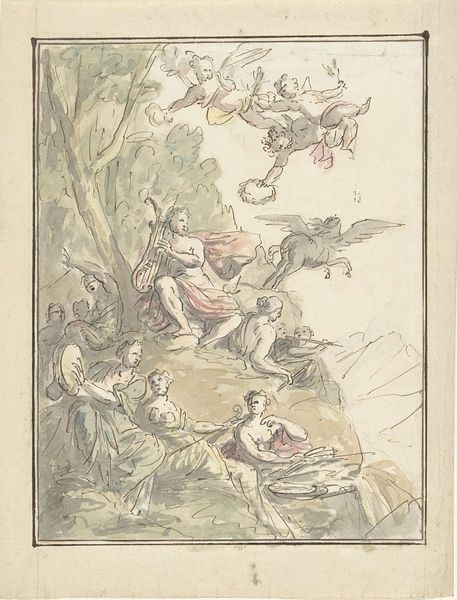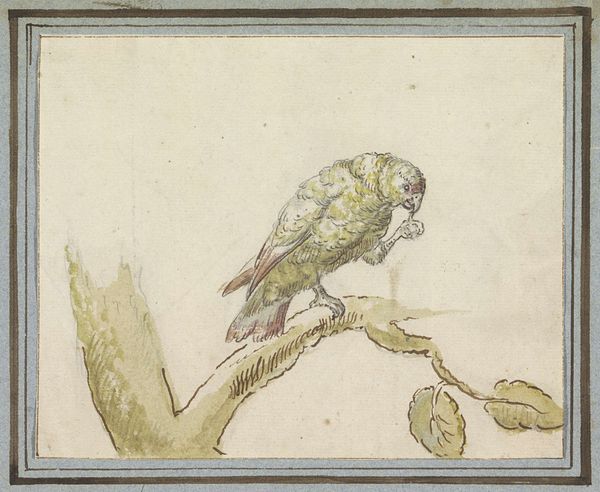
Copyright: Public Domain: Artvee
Editor: Here we have Arthur Rackham’s “A Squirrel and a Crow” created in 1913, a pen and ink drawing on paper. The drawing is a fanciful depiction of the titular crow and a squirrel-like character, but I'm intrigued by the sketch-like quality and how the landscape in the background seems to fade away, almost secondary to the interaction between these two figures. What compositional elements stand out to you? Curator: Formally, I am immediately struck by the dynamism inherent in the linework. Rackham employs a rather vigorous hatching technique, particularly in rendering the crow. This not only defines its form, lending it a certain volume, but also imbues the figure with a sense of restless energy. The interplay of light and shadow is created through variations in line density, thereby articulating the contours of both figures and lending them a sculptural presence within the two-dimensional plane. Notice, too, how the limbs of the tree serve as framing devices. Do you see how those linear elements direct our gaze? Editor: I do, that's a good point. The lines of the bare tree branches almost act as arrows, drawing our eyes back to the crow and the…squirrel creature. Curator: Precisely. And further examine how the monochromatic palette, punctuated by subtle tonal variations, reinforces the graphic nature of the piece. Colour, or the distinct absence thereof, becomes an important signifier in directing our interpretive path, leading us toward an appreciation of form and line as the primary communicative devices. How do you think the artist creates a sense of depth here without colour? Editor: By using detail selectively. The foreground is highly detailed, becoming less so towards the horizon. Curator: Precisely. In essence, the formal qualities of "A Squirrel and a Crow" underscore the artist's sophisticated engagement with visual language, one that transcends mere representation to offer a compelling statement on form, technique, and the very act of seeing. Editor: This really opens my eyes to Rackham's masterful control of line and form to create depth and dynamism. Curator: Indeed, it's a powerful lesson in how formal elements can speak volumes.
Comments
No comments
Be the first to comment and join the conversation on the ultimate creative platform.
